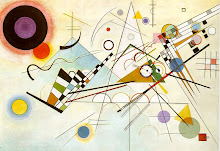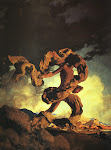Kurfüstendamn
1925
Metrópolis
1916-1917
Strasse in Berlin
1922-1923
The final painting is a bit strange, simply from the fact that it's not really strange at all. In fact, the piece bears a much greater similarity to Impressionism than it does to New Objectivity. It is perhaps Grosz's moment of calm in an exceedingly stormy life (I won't get into all the details of his difficult existence, suffice it to say that he was torn from his country by his loathing of Hitler and died falling down a flight of stairs from drunkenness).
High Dunes
1940











No comments:
Post a Comment